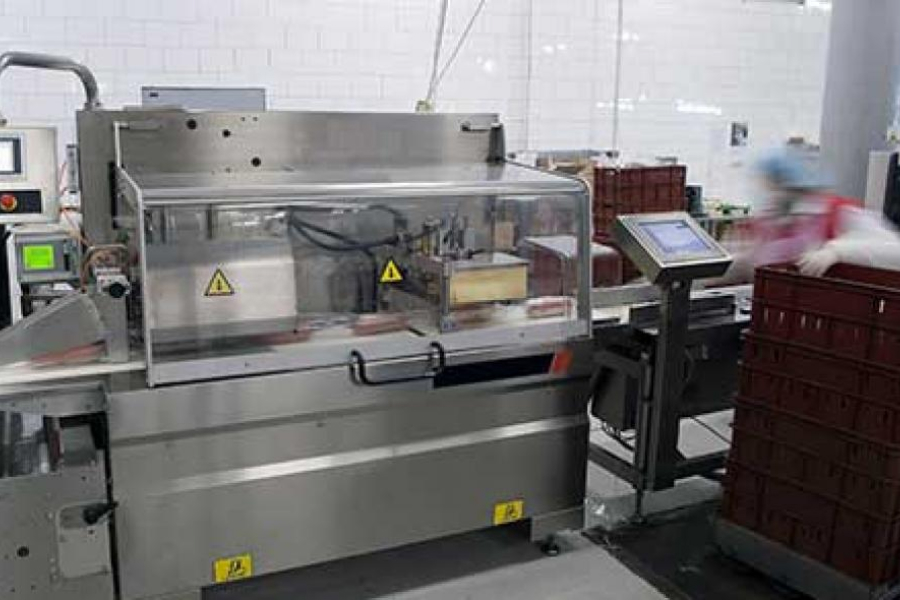
Why Now is the Time to Explore Packaging Automation
While you always take the health and safety of your employees seriously, the current COVID-19 pandemic and social distancing have created a whole new set of requirements. Yet, as an essential manufacturing business, you can’t send your production workers home to do their work.
It’s a serious business, as well as human, concern. On April 7, Cargill temporarily closed it pork and beef plant in Hazleton, PA, after multiple workers tested positive for the novel coronavirus.
“For companies vulnerable to a viral outbreak within their ranks, this would be a critical time to explore a proactive deployment of automation technologies to decrease worker density throughout their operations,” states consulting firm PricewaterhouseCoopers.
Packaging automation can be an important part of a more automated business. Automated packaging equipment can fill, cap, seal, and label packages of all sizes, with minimal or no human intervention.
In addition to social distancing concerns, if your company is increasing operations to produce needed food and other essential supplies, you may not have enough employees to meet the demand. Even before COVID-19, manufacturers faced labor shortages. Plus, companies changing their operations, such as the distilleries and breweries making hand sanitizers, may now need different equipment to handle packaging.
BENEFITS OF PACKAGING AUTOMATION
Automation and the right equipment can ease pressures on your business and its employees. Beyond immediate needs, packaging automation has ongoing benefits:
- Reduce the need to recruit and train employees. Reduce labor costs. Lessen the effects of labor shortages.
- Reduce waste. Machines more precisely cut materials to the right size and eliminate human error that can produce waste.
- Improve efficiency and production speed. Automated packaging machinery is much faster than manual packaging, which may let you add capacity. Automation also reduces bottlenecks and downtime due to human error or employee absence.
- Improve safety. Manual packaging is repetitive and can cause employee fatigue and repetitive stress injury. Employees who package heavy items are at increased risk of serious injury. In the food industry, automatic packaging also reduces the risk of food contamination.
Most packaging lines have three sections: front (getting product and packaging materials to the line), middle (putting the product into the package), and end (preparing the packaged product for shipping). Each section of the line uses different machines that vary by task. A few examples include case erectors, depalletizers, orienteers, fillers and labelers, case packers, unitizers, shrink wrappers, and pallet wrappers. You can choose to automate one or all parts of the line.
As with most technology, packaging equipment continues to become more sophisticated. The following developments have improved packaging automation in the 21st century, according to Packaging Digest:
- Touchscreen human-machine interfaces (HMIs)
- Sensors and machine vision systems
- Robotic systems that are faster, nimbler, and more robust
- Motion control, such as servo drives
- Communications through networks and wireless capability (including IoT)
SUPPLYONE’S PACKAGING AUTOMATION SERVICES
With the range of automation options available, how do you know what’s best for your company? How much automation? What type of equipment? Fully automatic or semi-automatic processes? How can you ensure the best ROI on implementing a new system?
SupplyOne’s packaging automation service helps you find the right packaging equipment for your business. We source equipment from a range of the best manufacturers, whether you need a few machines or an entire automated packaging line. Then we help you maintain the equipment.
“From Certified Packaging Specialists to knowledgeable Equipment Specialists and Factory Trained technicians, we’ve assembled a team of trusted, veteran packaging professionals prepared to provide support to our customers through any and all circumstances,” said Chip Reavley, Senior Vice President of Packaging Automation. “Knowing the importance and advantages of automation, particularly in our current environment we want to simplify equipment ownership throughout its lifecycle for our customers. Our efforts must afford our customers the time to focus on meeting the demands they are faced with, both now and into the future. We make sure their packaging process is hassle-free and adding value their businesses.”
A local SupplyOne office gives you fast, responsive service. At a time when a physical visit to your facility may not be possible, we can still work with you to determine your goals, production and packaging needs, customer requirements, shipping requirements, and other factors needed to develop the best packaging system for you.
Automation services are available as part of our Managed Services Program to help you streamline your packaging management. Learn more about the Managed Services Program from SupplyOne.
